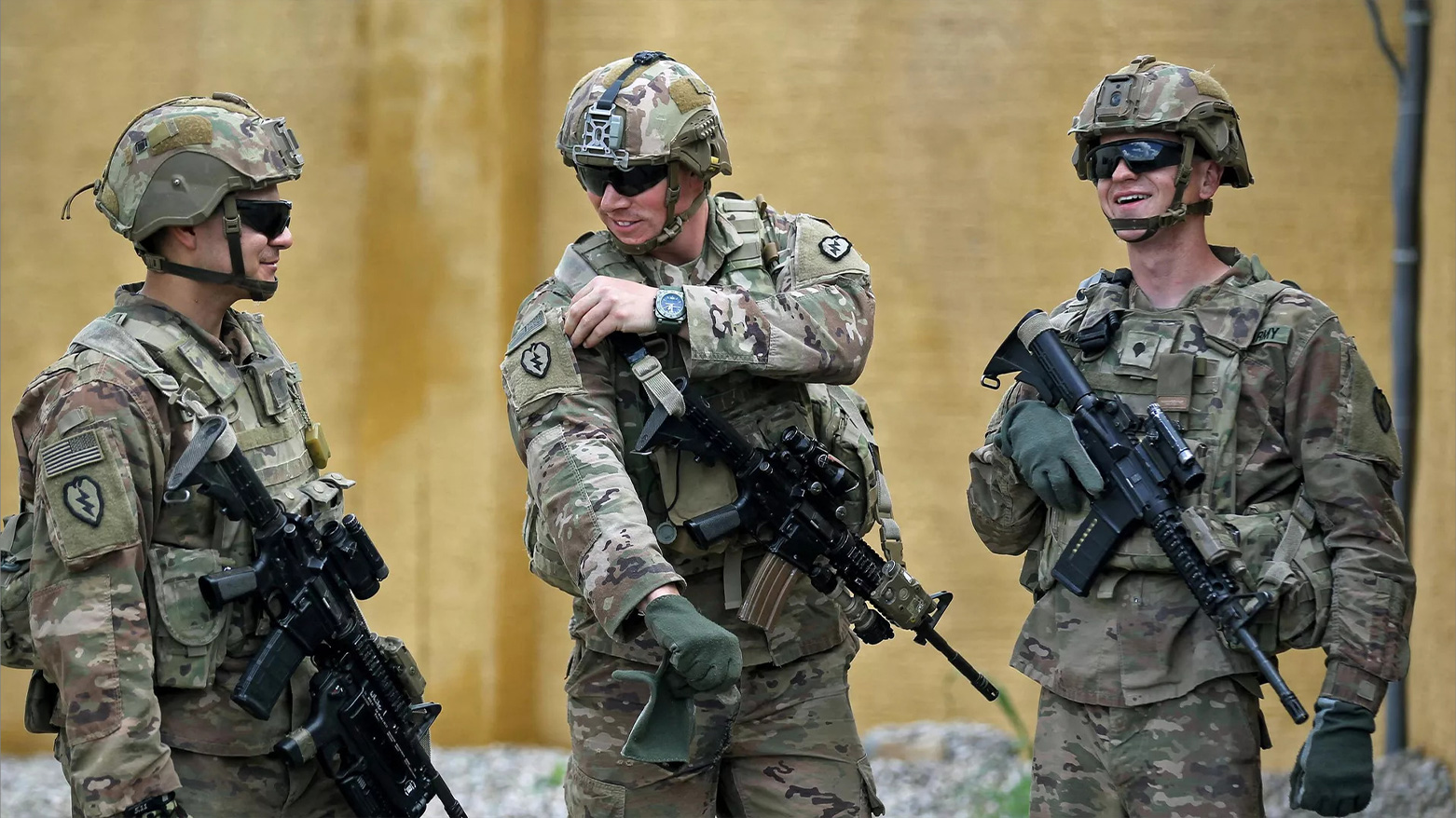Baghdad Signals Continued US Forces Presence in Iraq
The Iraqi Prime Minister underlined the need for US forces’ continued presence because of the escalating tensions in Syria, which he cautioned could spill over into Iraq.

Jan. 10, 2025
ERBIL (Kurdistan 24) – Iraqi sources revealed that Baghdad has decided to postpone the withdrawal of US forces, originally planned for September 2025, by at least three years due to evolving regional security dynamics.
The decision was conveyed by Iraqi Prime Minister Mohammed Shia al-Sudani during his recent visit to Tehran, according to a report by Al-Ain al-Akhbariya.
Al-Sudani, on his third visit to the Iranian capital since assuming office in October 2022, met with top Iranian officials, including President Masoud Pezeshkian, Parliament Speaker Mohammad Bagher Qalibaf, and Supreme Leader Ali Khamenei.
The Iraqi Prime Minister underlined the need for US forces’ continued presence because of the escalating tensions in Syria, which he cautioned could spill over into Iraq.
Syrian Crisis Drives Decision
An Iraqi official accompanying the Iraqi Prime Minister told Al-Ain al-Akhbariya that al-Sudani drew attention to Syria’s uncertain situation, which “may develop into armed confrontations” with potential security and military consequences for Baghdad.
Accordingly, as the report suggested the Iraqi Prime Minister emphasized the necessity to delay the US withdrawal timeline.
The announcement for a two-phase transition plan for CJTF-OIR operations in Iraq came in September of 2024.
"The United States and Iraq have decided on a two-phase transition plan for CJTF-OIR operations in Iraq," a senior administration official announced back on Sept. 27, 2024.
According to the announcement by the US Department of Defense back in September of 2024, during the first phase, the global coalition’s military mission in Iraq – the Combined Joint Task Force-Inherent Resolve would have been “concluded” by September 2025.
This meant ending the presence of coalition forces in certain locations in Iraq as mutually determined.
However, the announcement also noted that the coalition nations and Iraq recognized the persistent threat of ISIS in Syria and pledged to continue working to ensure the enduring defeat of ISIS.
The second phase looked to prevent the return of the ISIS terrorist threat in Syria. As stated back in September 2024, Iraq would allow the coalition "to continue to support counter-ISIS operations in Syria from Iraq throughout the second phase of the transition until at least September 2026, subject to conditions on the ground and, obviously, consultations among future political leaders of Iraq and the United States," the official said.
The official, and a colleague from DOD, emphasized that the United States and Iraq were moving towards the type of long-term security relationships the United States has with partners around the world.
"To be clear, the United States is not withdrawing from Iraq," the administration official reiterated. "This announcement comes after a decade of success from extraordinary international … cooperation between coalition partners, Iraqi security forces and the U.S. military and territorially defeating ISIS and in the core regions of Iraq and Syria.”
Read More: US Officials: “United States is not Withdrawing from Iraq"
However, the recent developments in Syria might have changed the plans and this could be the reason behind the proposed delay in coalition forces’ phased withdrawal from Iraq.
Read More: US Reaffirms Security Ties with Iraq
Iranian Reaction to Extended US Presence
As the al-Ain al-Akhbariya wrote, the Iranian Supreme Leader Ali Khamenei expressed discontent with the decision, reaffirming his opposition to the US military’s presence in Iraq.
The report also wrote that the Iranian Supreme leader also called on Baghdad to reinforce the Popular Mobilization Forces (PMF) instead of disbanding them.
Disbanding armed factions was one of the key discussion topics during the recent visit to Iran by the Iraqi Prime Minister al-Sudani.
Read More: Iraqi PM Balances U.S. Pressure and Regional Alliances in High-Stakes Tehran Visit
In a statement on his official website, Khamenei labelled the US presence as “illegal” and urged resistance against what he termed an “occupation.”
Additionally, Khamenei, as reported by the al-Ain al-Akhbariya, sought assurances from al-Sudani that the United States would not use Iraqi airspace to target Iran or its allied factions.
He reiterated Iran’s commitment to supporting Shiite armed groups in Iraq.
Diverging Perspectives
The source, who accompanied the Iraqi Prime Minister to Tehran, revealed to al-Ain al-Akhbariya that despite Khamenei’s stance, al-Sudani appeared disheartened by Tehran’s response.
In the meantime, Iraqi Foreign Minister Fuad Hussein has formerly noted an agreement with the United States for a gradual troop withdrawal, indicating the Iraqi government’s attempts to balance international partnerships and domestic security needs.
Context of US Troop Presence
Currently, almost 2,500 US troops remain stationed in Iraq as part of the international coalition against ISIS, with an additional 900 personnel in Syria.
The coalition played a central role in defeating ISIS, which controlled swathes of Iraq and Syria from 2014 until its territorial defeat in 2017 in Iraq and 2019 in Syria.
However, fragments of the group continue to pose threats, especially in remote areas.
The developing security landscape underlines the complex challenges facing Iraq as it seeks to navigate regional pressures while ensuring stability within its borders.
